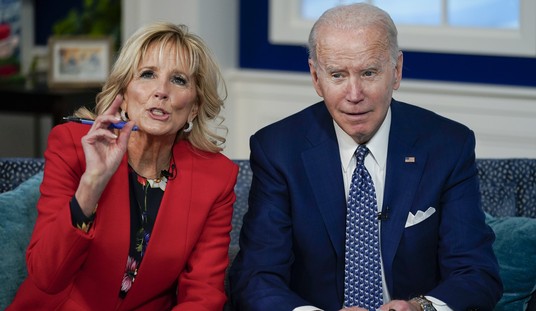House Budget Committee Chairman Paul Ryan will unveil his Fiscal Year 2013 budget at a press conference later this morning. Ryan's office has provided Townhall with a preview of the budget, a broad outline of which I will endeavor to construct below. As you read through Ryan's new plan -- which largely mirrors last year's controversial blueprint -- bear three things in mind:
(1) Last month, we saw President Obama's stab at next year's budget. His budget raises taxes by nearly $2 Trillion, does little to simplify the tax code, and spends $3.8 Trillion next year, a figure that jumps to $5.8 Trillion by the end of the decade. It offers no serious ideas to rein in the biggest drivers of our debt -- entitlement programs -- locking America onto an unsustainable path of unpaid-for obligations. It includes a fourth consecutive $1 Trillion-plus annual deficit, and adds $11 Trillion to the gross debt over ten years, including a net deficits expansion of $3.5 Trillion, according to CBO. It relies on trickery, crushing tax increases, and claiming credit for already-enacted spending cuts the president strongly opposed to create the illusion of "savings." The president's budget never balances.
(2) The Democrat-controlled Senate, for the third consecutive year, has chosen not to even introduce a budget -- despite their statutory obligation to pass one. 1,056 days have passed since the Democratic Senate last fulfilled this duty, a task that Majority Leader Reid now calls "foolish." Democrats claim that last year's temporary Budget Control Act "deemed" their budget passed. This is not governance. For cravenly political reasons, Senate Democrats will not offer a vision on tax rates, spending, entitlements and debt.
(3) Their lack of serious -- or in the Senate's case, any -- alternatives will not dissuade Democrats from unleashing hardcore demagoguery on Paul Ryan's 2013 Path to Prosperity. If the past is prologue, we'll hear shrieks about murdering grandmothers, leveling nursing homes, destroying Medicare forever, and imposing "draconian" cuts -- all while lining the pockets of "the rich."
Recommended
With those refreshers and warnings firmly in place, let's review what the new House Republican Budget actually proposes:
On Spending - The Path to Prosperity spends $3.53 Trillion in FY 2013, a number that grows to $4.88 Trillion by the end of the decade. It restores full military funding to pre-Budget Control Act sequestration levels, off-setting those dollars elsewhere and preventing a harmful gutting of our national defense. It reduces spending by $5 Trillion over the next ten years, compared to Obama's budget. It restores federal spending to the historical norm of 20 percent of GDP by 2015.
On Deficits - Ryan's blueprint reduces budget deficits by $3 Trillion over the coming decade, relative to Obama's budget. Although it doesn't happen immediately, and unlike Obama's plan, this budget balances. Within the current decade window, it comes closest to primary balance by achieving a $166 Billion annual deficit in 2018 (to put that into perspective, 2010's deficit under this president was $1.6 Trillion). The closest Obama's budget comes to primary balance is a $617 Billion shortfall in 2017, which is still roughly double the size of President Bush's average deficit.
On Debt - Unlike President Obama's unflinching debt express, the GOP budget's lowers spending and enacts crucial reforms to chart a more sustainable debt course, allowing the United States to gradually begin paying down the national debt. The plan would retire the publicly-held debt by the 2050's. Gross debt reached 100 percent of US GDP this year, an alarming tipping point -- yet President Obama's new budget offers ever higher debt in perpetuity:

On Taxes - This proposal aims to stabilize revenues at the historical average of 18 to 19 percent of GDP. It adopts a concept endorsed by the president's fiscal commission by drastically simplifying the tax code, reducing the complex series of income brackets to just two: 10 and 25 percent. (A large majority of Americans support a single flat tax rate; this is slightly more progressive, but is still a vast improvement). While the highest tax bracket would be 25 percent of income -- a level that a healthy majority of Americans view as "fair" -- the plan would also phase out and eliminate special tax loopholes and spending in the tax code. This would disproportionally affect higher-income earners. Slightly revising President Obama's recently-introduced plan, the Ryan budget would also cut US corporate tax rates from the current sky-high 35 percent to 25 percent. (Obama's preferred reduction would be three percentage points higher, at 28 percent). In exchange for a lower, pro-growth rate, corporations would also lose various write-offs, loopholes, and corporate welfare. In sum, the tax code would be made far flatter, more predictable, and simpler for everyone.
On Medicaid and Social Security - Like last year's budget, Paul Ryan's 2013 iteration would block grant federal Medicaid contributions to the states, allowing state governments the flexibility to better meet their citizens' needs. The new Ryan budget also steers clear of committing to any specific Social Security fixes, instead requiring the president and Congress to advance bipartisan solutions. Attempting to simultaneously reform two popular but unsustainable entitlement programs is a massive political risk. Conservatives would likely prefer to see a bold plan on Social Security, too, but Ryan is picking his battles wisely. The longevity of Social Security can at least be enhanced with a few basic changes, including means-testing for income and slowly raising the retirement age to keep pace with life expectancy. By comparison, Medicare is the far bigger problem with much more red ink attached to it.
On Medicare - This was the source of so much Left-wing hysteria last year, and will again be a major focus in this election year. Democrats, buoyed by their success in upstate New York last year, have been salivating over the chance to employ "Mediscare" against Republicans in the fall. To mitigate these attacks, Paul Ryan has done something very clever. He's significantly tweaked his previous premium support model to incorporate a bipartisan solution he co-authored with liberal Democratic Sen. Ron Wyden of Oregon. Like Mitt Romney's plan, which Ryan has all but endorsed, this revised approach maintains last year's responsible and generous plan, but adds traditional fee-for-service Medicare as an option for future seniors. When younger workers retire, they'll choose from among a host of private plans, plus the current Medicare model, and will be offered Medicare premiums from the government support to pay for these plans. The plans will compete for future seniors' business. Richer and healthier future seniors will receive lower levels of support; less wealthy and less healthy future seniors will receive significantly higher support. The benchmark for premium assistance levels would be the cost of the second-lowest private plan or the current fee-for-service model, whichever is lower. (The increase in total program spending would be indexed to GDP growth, plus 0.5 percent) All plans would be required to provide the range of coverage that today's seniors enjoy. As was the case last year, these reforms would not affect anyone over the age of 55. At all. As Democrats prepare to reprise their 2011 lie of the year by cynically claiming that Ryan's budget "ends Medicare as we know it," let's recall that basic math ends Medicare, period, within the next 12 years. That's the issue that must be addressed to save the program. Republicans are offering their solution, which is now partially based on a new bipartisan compromise proposal. Most Democrats' position on the matter can best be summed up by Treasury Secretary Tim Geithner, who offered this brave commentary on entitlement reform at a budget hearing last month:
"You are right to say we're not coming before you today to say 'we have a definitive solution to that long term problem.' What we do know is, we don't like yours."
Other notable items - The 2013 Ryan budget also repeals Obamacare (most Americans cheer) and the Medicare rationing board known as IPAB, offering a market-based alternative to take its place. It calls for a reduction of executive regulations flowing from entities such as the EPA and NLRB, and suggests an end to counterproductive moratoriums that limit safe domestic energy production. The plan ends bailouts and winds down Fannie Mae and Freddie Mac. The plan seeks to curb the explosion of food stamps usage, which has shot up from 28 million to nearly 47 million over the last four years alone. The Path to Prosperity would ensure that those in need would continue to receive help, but would also replicate successful welfare reform tactics such as work requirements, time limits, and aggressive anti-fraud efforts.
Congressman Ryan will expand on this roadmap to fiscal sanity in a speech at the American Enterprise Institute later today. We'll continue to offer coverage as this crucial debate moves forward. As the title of this piece suggests, brace for impact. Today marks the official beginning of what promises to be a hugely important, refreshingly clarifying, and -- at times -- inevitably maddening election year rumble. Will America choose President Obama's illusory and reckless path that clings to an untenable status quo, consigning our future to what Paul Ryan calls "debt, doubt and decline"? Or will we be adults, recognize the red tidal wave that's heading our way, and act boldly to avert a wrenching and deeply unpleasant debt crisis on our own terms? I'll leave you with Ryan himself laying out the stakes of this fight, which is about so much more than petty politics:
There's your pep talk. Let's do this.





















Join the conversation as a VIP Member